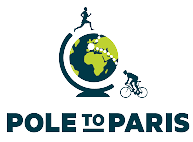What is the correct sequence of vertebrate evolution?
What is the correct sequence of vertebrate evolution?
The first vertebrate to evolve is the bony fish. Before that there were jawless fish. The amphibians evolved next after fish. It is the first vertebrate to live both on land and in water.
What are the four major categories of main evolutionary innovations among vertebrates?
Vertebrate innovations include neural crest cells and their derivatives, neurogenic placodes, an elaborate segmented brain, endoskeleton, and an increase in the number of genes in the genome.
What are the six criteria used to determine the evolutionary branch of vertebrates?
Dichotomy in each of the six following criteria builds the vertebrate evolutionary branch: absence of mandibles separates cyclostomes from others; absence of limbs separates fishes from the remaining; absence of osseous skeleton separates chondrichthian (cartilaginous) fishes from osteichthyes; absence of impermeable …
What features define vertebrates?
Vertebrates are differentiated by having a vertebral column. As chordates, all vertebrates have a similar anatomy and morphology with the same qualifying characteristics: a notochord, a dorsal hollow nerve cord, pharyngeal slits, and a post-anal tail.
What are 3 structures present among all chordates and are characteristics of this phylum?
What three structures are present among all chordates and are characteristic of this phylum? All organisms of the phylum Chordata have branchial clefts in the pharynx (in some species present only in the embryo), a notochord (substituted by the spine in vertebrates) and a dorsal neural tube.
Why is the amniotic egg an important evolutionary breakthrough?
The amniotic egg was an evolutionary invention that allowed the first reptiles to colonize dry land more than 300 million years ago. Fishes and amphibians must lay their eggs in water and therefore cannot live far from water. But thanks to the amniotic egg, reptiles can lay their eggs nearly anywhere on dry land.
What are the four general characteristics of vertebrates?
Terms in this set (4)
- living endoskeleton. internal skeleton that grows with the animal (there is no molting).
- pharnyx and efficient respiration. improved oxygen flow into the animal.
- advanced nervous system. large and complex brain and nervous system is present.
- paired limbs.
